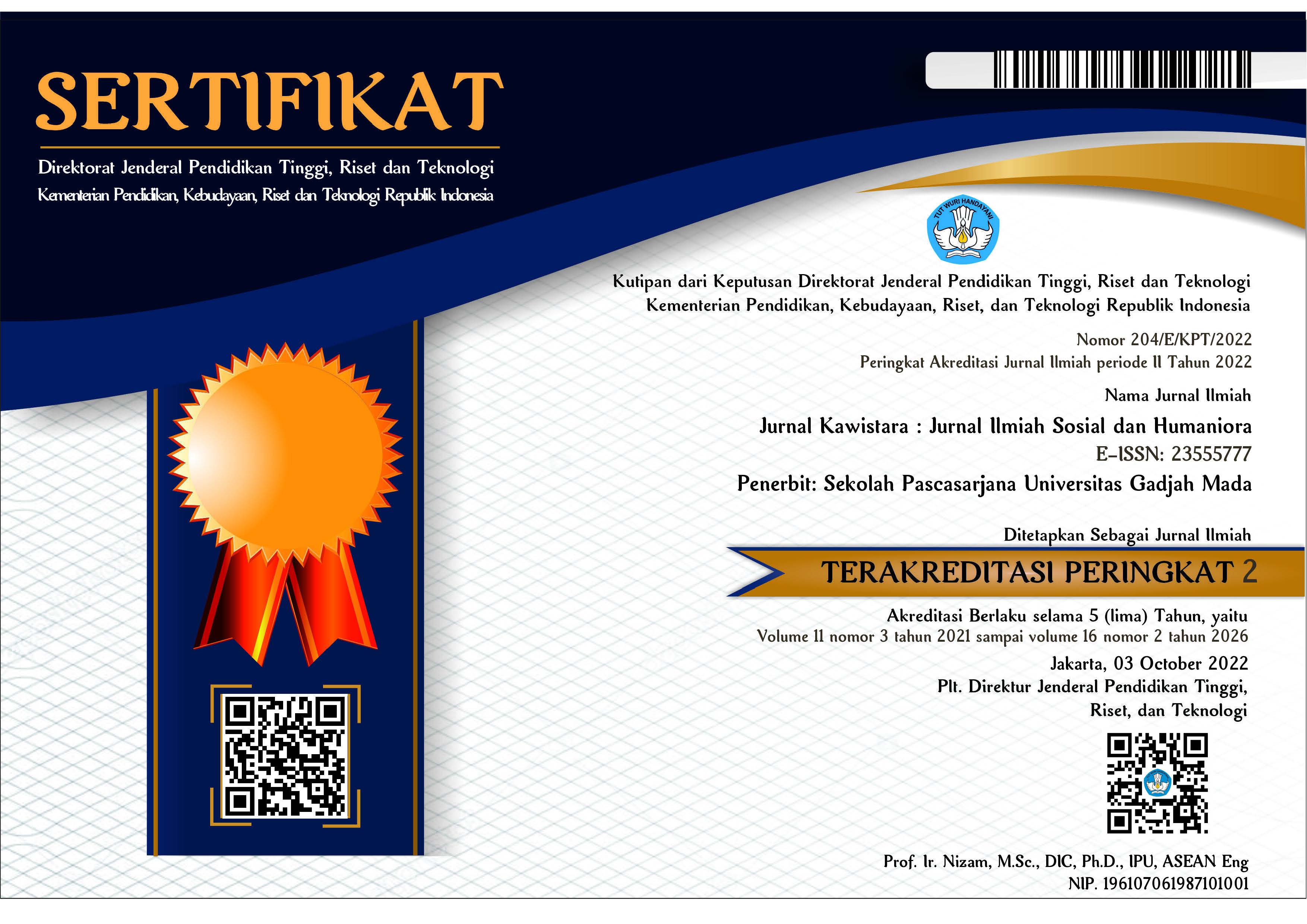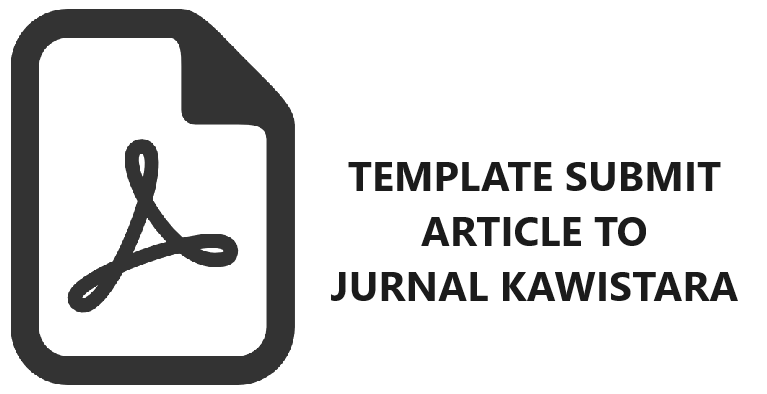PEMBERDAYAAN PRANATA SOSIAL MELALUI KOMUNIKASI LINGKUNGAN: MENAKAR PELIBATAN PERAN PEREMPUAN DALAM MITIGASI BANJIR CITARUM
Iriana Bakti(1), Hanny Hafiar(2*), Heru Riyanto Budiana(3), Lilis Puspitasari(4)
(1) Universitas Padjadjaran
(2) Universitas Padjadjaran
(3) unpad
(4) Universitas Padjadjaran
(*) Corresponding Author
Abstract
The study is titled implementation of environmental communication based on the social institution in coping with the flood in the Citarum Watershed Upstream. Citarum river pollution and silting are currently in a state of particular caused by forest encroachment in the upstream, land use, household waste, animal husbandry, industry, offices, etc, so when the rainy season caused the occurrence of floods. In addition, these conditions have resulted in water quality being unfit to be utilized, both for drinking water, washing, bathing, irrigation for agriculture and so on. The actuator environment seeks to restore the Citarum Watershed upstream conditions by building public awareness so they may want to change their attitudes and behavior, one of them by not disposing of waste into the river. The selected communities are those that are incorporated in a social institution in the region. The purpose of the research is to find out about the types of institution, the reason for utilizing the institution, and the role of the environment actuator communication in a social institution. The methods used in this research is descriptive with qualitative data to describe the various realities of communication activities related to the environment by leveraging social institution in coping with the disaster of the flood in the area of Citarum Watershed Upstream. Research results showed in the region there are four types of institutions, namely the institution of religious, economic, agricultural and social. Institution related to religious activity is Majlis Ta'lim (the place of informal Islamic teaching and education), institution related to the activity of the economy is an arisan (regular social gathering), institution related to social activity is the PKK (Family Welfare Guidance), and institution related to the agricultural activity is The Association of Farmers Group (Gapoktan). The reason for the environment actuator utilizing social institution are as the entrance (access) to carry out flood mitigation program, already familiar, easy to invited to cooperate and to expand the network. The role of the environment actuator in the institution as a communicator and facilitator in conducting dissemination of information and training of waste utilization to the members of the institutions.
Keywords
Full Text:
PDF (Bahasa Indonesia)References
Absori, (2006). Pemberdayaan Masyarakat Melalui Penguatan Otonomi Masyarakat Dalam Penyelesaian Sengketa Lingkungan Hidup, Jurnal Penelitian, Fakultas Ilmu Hukum Universitas Muhammadiyah, Surakarta.
Ahnaf, M. I. (2013). Menyambut Era Kebangkitan Agama. Jurnal Kawistara, 3(1), 109–111.
Alwasillah, A. C, (2008). Pokoknya Kualitatif. Jakarta: Pustaka Jaya.
Bakti, I., Ariadne, E., Dewi, S., Romli, R., Budiana, H. R. (2015). Analisis Faktor Personal Pada Sumber Komunikasi Dalam Pengelolaan Tanaman Obat Keluarga Di Jawa Barat. Jurnal Kajian Komunikasi, 3(2), 133–139.
Bakti, I, (2013). Komunikasi Lingkungan Dalam Pengelolaan DAS Citarum Hulu. Studi Fenomenologis Tentang Konstruksi Makna Dan Tindakan Komunikasi Lingkungan Oleh Penggiat Lingkungan Dalam Pengelolaan DAS Citarum Hulu Berbasis Kearifan Lokal Dan Pranata Sosial. Disertasi. Bandung: Fikom Unpad
Colletta, N J., dan U Kayam, (1987), Kebudayaan Dan Pembangunan. Sebuah Pendekatan Terhadap Antropologi Terapan Di Indonesia, Jakarta: Yayasan Obor Indonesia.
Cox, R. (2009). Environmental Communication and The Public sphere. second edition. California: Sage Publication Inc.
Fukuyama, F. (2014). Hakikat Manusia dan Rekonstruksi Tatanan Sosial. Yogyakarta: Qalam.
Garna, Y K., (2008). Budaya Sunda Melintasi Waktu Menantang Masa Depan, Bandung: Lembaga Penelitian Unpad.
Hapsoro, AW, dan I Buchori, (2015). Kajian Kerentanan Sosial Dan Ekonomi Terhadap Bencana Banjir (Studi Kasus: Wilayah Pesisir Kota Pekalongan. Jurnal Teknik PWK Volume 4 Nomor 4 2015
Jurin, R R., D Roush, and J Danter, (2010). Environmental Communication. Second Edition: London New York: Springer Science+Business Media.
Knapp, M L., (1978). Nonverbal Communication in Human Interaction. Second Edition, New York: Holt, Rinehart and Windston.
Kusumo, H (2009). Filsafat Kebudayaan Proses Realisasi Manusia. Yogyakarta: Jalasutra.
Littlejohn, SW., and KA. Foss, (2005). Theories of Human Communication, Belmont, CA: Thomson Higher Education.
Maskud. (2016). Kearifan Lokal Dalam Penanggulangan Bencana Banjir Bandang Dan Tanah Longsor Di Kecamatan Panti Kabupaten Jember. Jurnal FENOMENA, Vol. 15 No. 2 Oktober 2016
Muhtarom, A. (2014). Pembinaan kesadaran lingkungan Hidup Di Pondok Pesantren: Studi Kasus Di Pondok Pesantren Al-Mansur Darunnajah3 Kabupaten Serang. Jurnal Kebudayaan Islam, Vol. 12, No. 2, Desember 2014
Mulyana, D. (2006). Metode Penelitian Kualitatif, Bandung: Remaja Rosdakarya.
Nassaluka, E. U., Hafiar, H., & Priyatna, C. C. (2016). Model Kemitraan PT. Holcim Indonesia Tbk. Jurnal Profesi Humas, 1(1), 22–34.
Suparna, P., R, T. S., & Winoto, Y. (2013). Keterbukaan Komunikasi dalam Menciptakan Iklim Komunikasi yang Kondusif di Perpustakaan. Jurnal Kajian Informasi & Perpustakaan, 1(2), 157–164.
Suradisastra, K. (2008). Strategi Pemberdayaan Kelembagaan Petani, Forum Penelitian Argo Ekonomi, Vol.2, Bogor: Pusat Analisis Sosial Ekonomi dan Kebijakan Pertanian.
Zamzami, L. (2016). Dinamika Pranata Sosial Terhadap Kearifan Lokal Masyarakat Nelayan Dalam Melestarikan Wisata Bahari. Jurnal Antropologi, Juni 2016 Vol. 18 (1)
(http://kangebink.blogspot.co.id/2013/10/menguatkan-modal-sosial masyarakat.html).
Article Metrics
Refbacks
- There are currently no refbacks.
Copyright (c) 2017 Jurnal Kawistara

This work is licensed under a Creative Commons Attribution-ShareAlike 4.0 International License.
Jurnal Kawistara is published by the Graduate School, Universitas Gadjah Mada.











